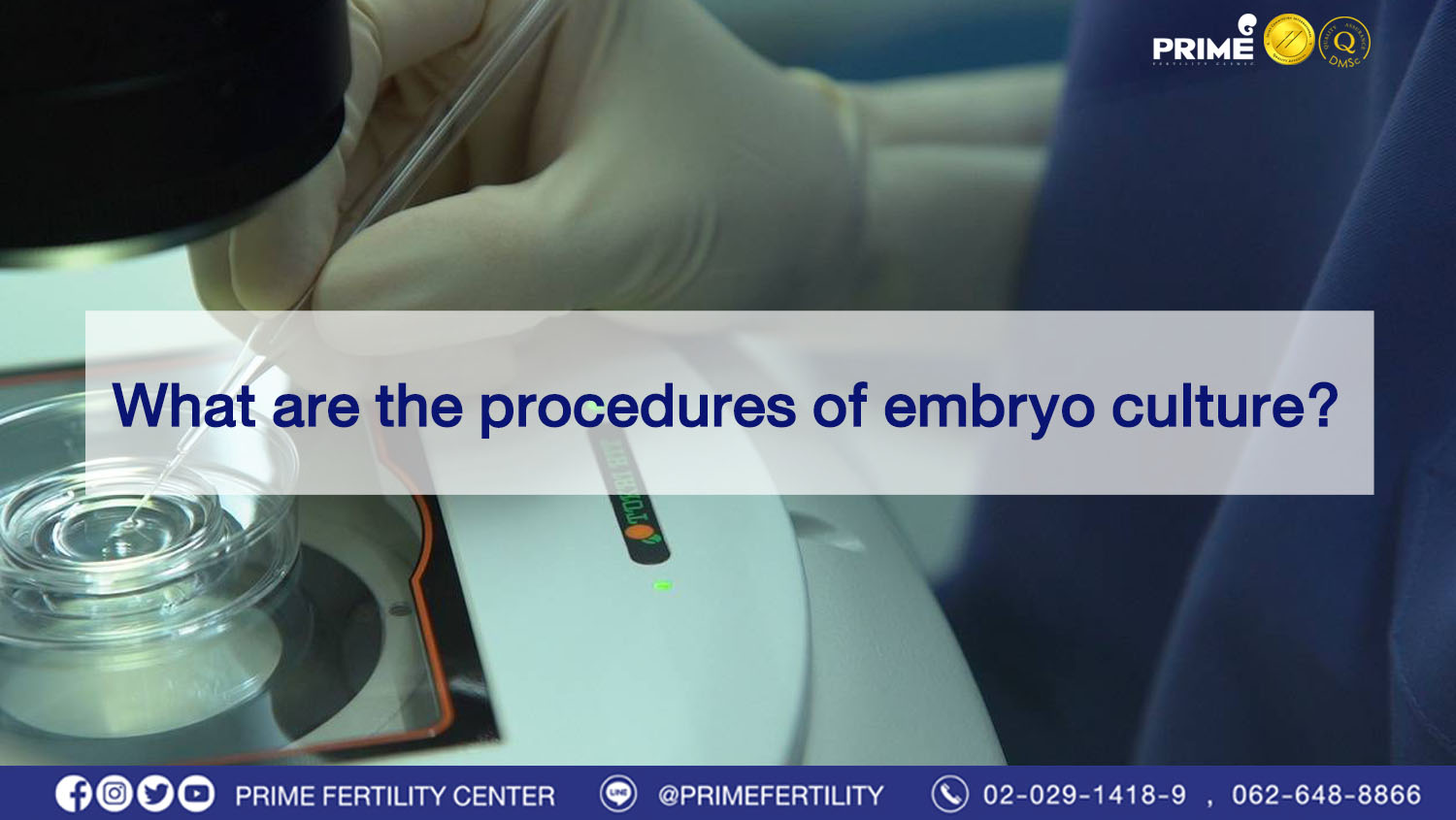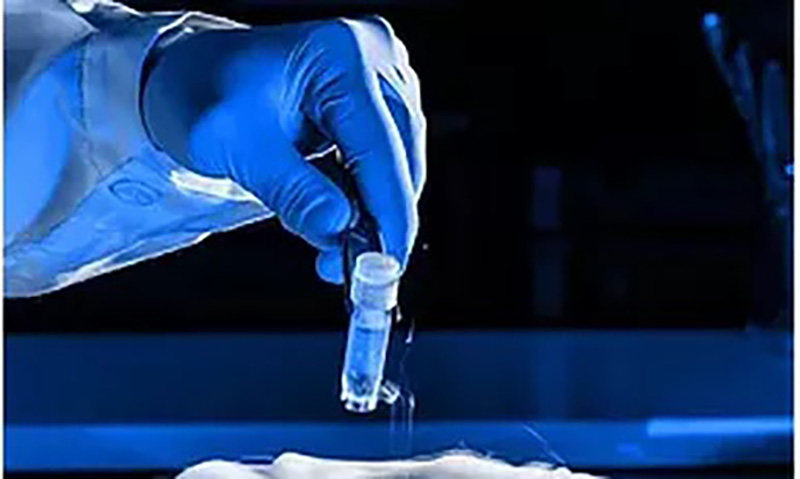The procedures of embryo culture for infertility treatment are described as below:
Embryo culture is a step after ovum retrieval process. Embryologist will combine egg with sperm for the purpose of fertilization. Therefore, embryo culture is a delicate process. Every procedure needs to be conducted by fertility specialist in order to reach the achievement.
On the ovum retrieval day, oocyte will be fully matured and ready to be fertilized. Once the attending physician collects the patient’s egg, it will be submitted to a laboratory immediately. After that the embryologist will analyze and screen it by using high resolution stereo microscope in order to separate the egg from fluid inside follicle. Now we have the egg together with surrounding cells then we will clean it with special washing solution. Next, we place the egg on sterile dish and keep inside the embryoscope which is able to control CO2 level. Finally, the perfect time of fertilization comes. Embryologist will inject one best sperm, has been tested from semen analysis, into the egg and let them combine. (Technical term of ovum retrieval day is “DAY O”.)
16-18 Hours after combining egg and sperm, we need to monitor the development of embryo. Embryo in this stage is only a single cell consisting 2 circles inside (called “Pronuclei”). Of course, pronuclei is the genetic material from father and mother. (Technical term is “DAY 1”.)
After the past 3 days (Technical term is “DAY 3”.), embryologist will use laser to assist the hatching as well as checking how well the embryo can grow up. In this stage, embryo should divide to be 8 cells. Division less than 8 cells means embryo is having growth retardation.
Embryo on day 5-6 is called “Blastocyst”. Embryo in this stage is suitable for intrauterine implantation since there are enormous cells division and the embryo has developed until reaching cells group layer. Many laboratories decide to transfer the embryo in this stage. Especially for woman who has experienced abortion or failed from the previous in-vitro fertilization program.
About Embryo Storage
How to identify the owner of each embryo. Embryologist will put the label on sterile dish and place the correct embryo matching with the label. Each label shows necessary details which are full name and HN no. Therefore, these labels are attached with both sterile dish and embryoscope in order to avoid mistake. Then we can work on it as “Double Identity”. One embryoscope can store 8 sterile dishes. Like 8 houses of embryos. Each dish has 12 drops like a private room for each embryo. In case patient has a lot of fertilized eggs, we can put more sterile dishes as many as requirement. Definitely, every embryo will be secured by the label with accuracy and completeness.
Since the in-vitro fertilization requires patient receive the ovarian stimulation in order to produce a lot of eggs more than natural ovulation. So, there are many embryos obtained. But doctor will select only 1-2 embryos to be transferred to the uterine cavity. The rest of embryos will be cryopreserved for next transfer cycle or future use once patients need to have more child. We can thaw out these embryos later on. Embryo freezing in laboratory is called vitrification. We will do vitrification by using high-intensity cryoprotectant solution and cooling down rapidly with liquid nitrogen at -196 Degree Celsius. This procedure does not require an expensive equipment and it takes only 30 minutes per case approximately. However, the process will need to be performed by experienced and skillful embryologist. As it is concerning about vitality of embryos.
Suggestion about egg count for in-vitro fertilization
• Women under 35 years: Recommend 10-15 follicles per 1 pregnancy
• Women over 35 years may need more eggs. Success rate of pregnancy is 7% per 1 follicle since aging causes egg quality become lower. Therefore, women should have a lot of reserved eggs in order to increase pregnancy opportunity as well. Only 1-2 embryos will be used for each cycle. Such as: woman who has 15 follicles, 80% of them will become embryos which mean 12 follicles. Doctor will transfer not over than 2 embryos for 1 cycle. If both transferred embryos can implant and grow up well, we will call multifetal pregnancy. However, we do not recommend anyone to transfer a lot of embryos since there will be many risks of insecurity to mother and fetus. Therefore, the transfer of multiple embryos is under the doctor’s consideration and evaluation accordingly.
In conclusion, embryo culture is a delicate step and it is one of very significant procedures for the achievement of infertility treatment as well.
Getting to know Embryo Freezing service
Question about Infertility Treatment: Click Here
Review Clip from Our Patients: Click Here
#ICSI #IUI #IVF #eggfreezing #EmbryoFreezing #SpermFreezing #SemenAnalysis #Hysteroscopy #FET #PGT #PGD #NGS #PESA #TESA
#primefertilityclinic #primefertiltycenter #fertilityclinic #bangkokfertilityclinic #thailandfertilityclinic
Reference: Prime Fertility Center Co., Ltd.
https://www.primefertilitycenter.com/en/qa-with-embryologist-what-are-the-procedures-of-embryo-culture/


